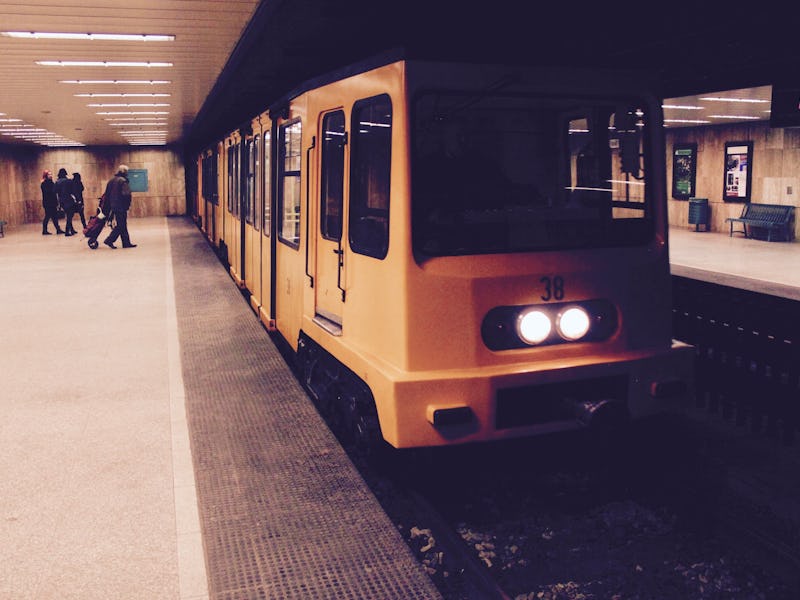This Hungarian Subway Is Like a Ride Into the Past
It's the Coney Island Cyclone rollercoaster of Central Europe.

People don’t venture to Budapest to marvel at its infrastructure, which is a shame, because the Budapest Metro boasts a pretty underrated secret: it’s home to the third-oldest functional underground railway in the world (after London and Istanbul). Here’s another factoid that’s probably less surprising: it definitely runs like you would expect a century-old subway to run, with all the screeches and jilting motions freely included in the less than $2 fare.
Line 1 of the city’s metro line — affectionately known by locals as “the underground” (a földalatti) — is a strange foil to the system’s other lines — M2, M3 and M4, collectively known as the metró. While the more modern metro is a smooth and soft way for a metropolitan of over 3 million people to get around, the underground is a shaky, noisy-as-hell car that trudges through the darkness like no other. The second you get on it, it’s obvious that this line — a UNESCO World Heritage Site — was built in 1894.
I had the privilege of taking Line 1 up and down all of its 11 stops. Here’s what the journey looked like:
The city’s public transportation is a combination of buses, surface trolleys, and rapid transit underground railroads.
Line 1, however, is older than any of those things — having been first constructed in 1894. I got on at the Vörösmarty utca station.
It was a casual Sunday.
Extremely casual. When I first entered the station, I was the only one waiting on either side.
Compared with the New York City subway and many other U.S. underground rail systems, Line 1’s stations were small. Rush hour, one could imagine, probably creates a very cramped experience. There is no way Budapest’s Line 1 could handle the commuter levels of, say, the L train in New York City.
But perhaps that’s the point. There’s something charming about the design of wood and white tile facades that the line of the walls of the station.
The assistant’s booth, for example, looks like a relic from the early 20th century. One soon gets the feeling Line 1 is more of a novelty than a useful mode of transportation in Budapest.
The yellow, boxy look of the train does nothing to dispel to the toytown vibe.
Nor does the cramped interior — even when it’s empty.
When Line 1 gets crowded, it can feel like an extended family filling into a minivan. The effect is only complicated by how much the car rocks back and forth. Anyone who is easily caught by motion sickness should prepare themselves a bit for this ride.
The seats are pretty comfortable, but who picked out such a bizarre cushion design?
Straphangers can at least enjoy the soft touch of leather.
They just have to be wary of thieves roaming around.
Metro maps hanging around the car are just as difficult to read as the NYC subway maps.
The ads are equally as aggressive as their Manhattanite counterparts. This is for a reality show, the title of which seems like a Jersey Shore-styled narrative, based on its title, which translates to “Babes, Dogs, Lake Balaton.” Cool cool.
The car doesn’t have air conditioning. The only way to keep yourself cool and calm is to find a spot close to the open windows.
The closing of doors is a fairly jarring experience to the senses. An ugly orange light flicks on, accompanied by a horribly loud buzzer noise. It’s enough to ensure everyone stays out the path of the doors as they move inward.
Some of the stations, however, like Mexikói út, possess a more modern feel to them.
Which includes digital screens to let you know which connecting buses and trams on the surface are leaving soon.
Like this guy over here.
Overall, Line 1 is the Coney Island Cyclone ride of Central Europe.